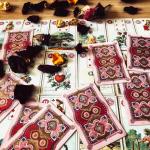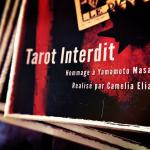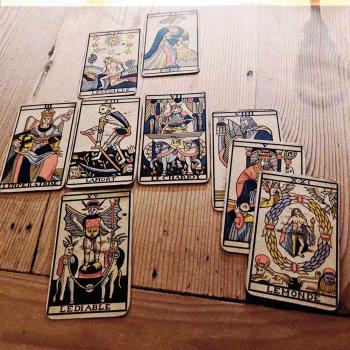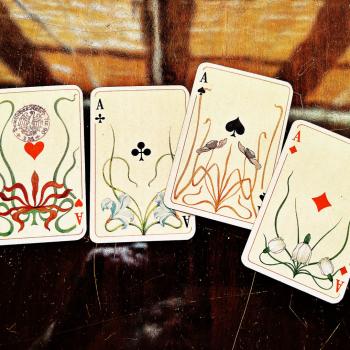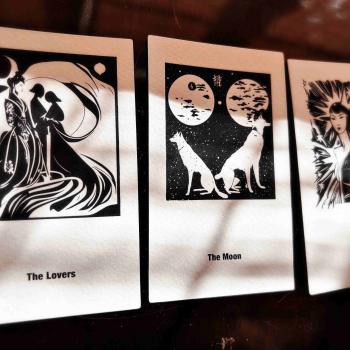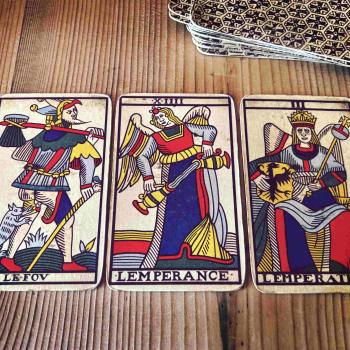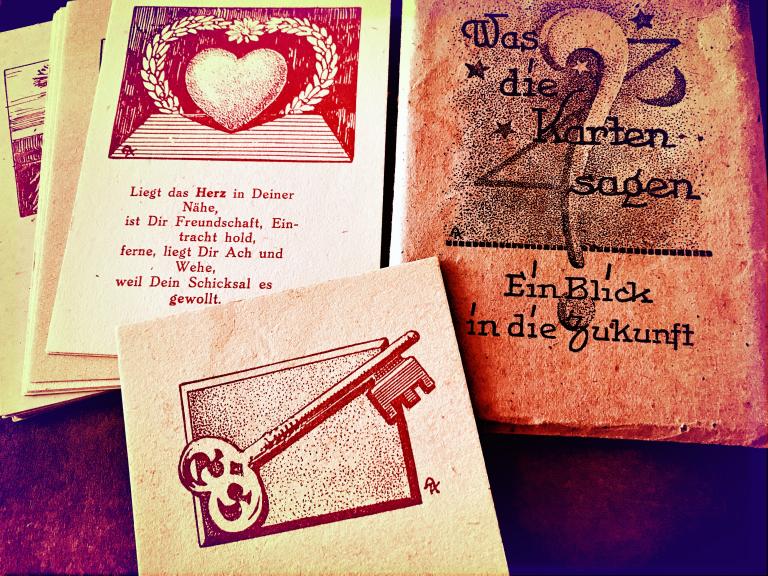
I often get up in the morning with the sense of feeling good having had a particular dream. But I often also think about the good dream as one in whose participation I prefer a different role. For instance, I can have an excellent dream about satisfaction at work, reconciliation with past lovers, or one in which I’m not a disciple, but the Zen master herself.
But what I also experience in these dreams is that I can adopt an attitude that’s more submissive than active. This mean that while I get up with an immense regenerative power, I can also go through the day saying to myself: That was very good, but why do I have to subject myself to waiting, waiting for the other to recognize what I do, or waiting for the lover to figure out how to touch me without my having to spell it out for him, and thus forever ruin the magic that is called high sensuality? Dream state or no dream state, there’s nothing more frustrating than having to tell people what you like and what you don’t.
In a dream analysis this is what I actually want to get at, the state of experiencing my unconscious desires without having to use any words to describe either what they are all about or how to go about it in order to realize them.
Everyone having tried a magical conjuration will know that words are important, but have you ever wondered why most of the words spoken are utter gobbledygook, why abracadabra is not something that your conscious mind acknowledges as part of rational discourse?
The magic thing about dreams is that they escape the trap of culture. As culture is all about maintaining a state of fear and desire, dreams open up the road that goes beyond fear and desire. Why culture wants us to fear and desire is not a secret, as it has to do entirely with the economy of existence. ‘How are you going to survive is if you won’t buy my recipe for love, or if you’ll never fear that no one loves you?’ This is culture-speak.
Dreams don’t give a shit. There’s no taboo that can’t be transgressed, no love that’s not fierce enough, no mastery that can’t undo itself for the sake of demonstration.
The Devil’s card
In this essay in the series Cards and Magic, I’ll use an old German Lenormand deck in my collection to create a square of 12+1 cards arranged in 3 rows of 4 cards, with the last designated to be a magic token.

Read the top row as a representation of the question that your dream presents you with.
Read the middle row as a representation of the challenges that your dream presents you with.
Read the bottom row as a representation of the key to both the question and the challenges that the question poses.
The last card is a representation of your magic token in the sense that you can think of it as your Devilish intervention into your unconscious.
If, for instance, you like your romance dream, but you don’t like the position of the damsel in distress – who, while euphorically enjoying her lover’s touch is at his mercy, begging, ‘please come back’ – you can use this token to reverse the roles.
If your dream is a nightmare, same thing here. After investigating into the dream’s premise and challenge (top and middle row), you can take the token card (the 13th card, or the Devil’s card) to intervene, and thus tweak the solution to suit your end, especially if the solution is one that resists you.
For the advanced practitioner in lucid dreaming, I suggest the following: Induce the repetition of the dream via meditation prior to falling asleep, and dream the same dream while being aware of having the 13th card on you. Make sure that your meditation contains wearing a piece of garment that has pockets you’re aware of, or else you can induce a dream in which you carry a magic bag that has this card in it.
I laid down some cards for myself, and I couldn’t help laughing, as, again, I see that the token is very similar to the magic transmission that I received from the cards for my previous example, where the Woman turned out to represent both my significator and the answer to the action.
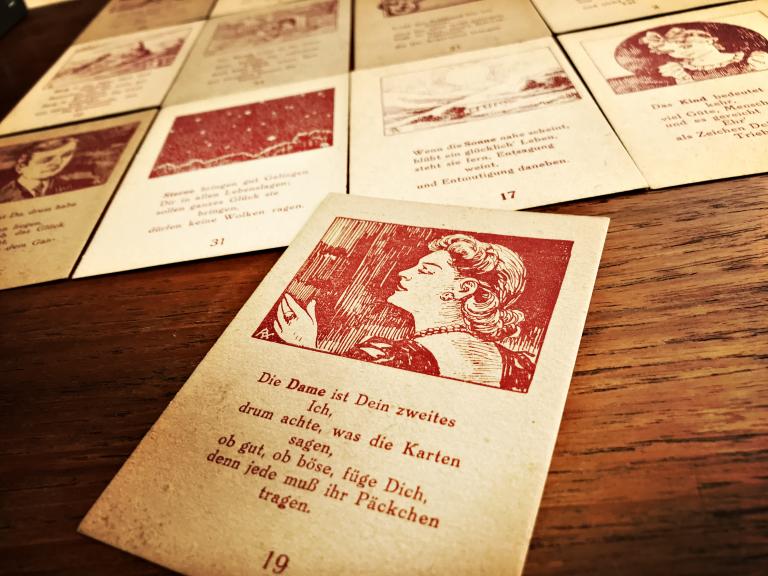
Here likewise, the magic token is the Woman, so myself. Someone please un-Zen me for the purpose of illustrating my points here…
If this also happens to you, I suggest that for your dream intervention you carry a mirror on you, that is, you induce a dream in which you carry a mirror whose function you’re aware of.
 If we were to say something about the cards here, as they correspond to my method points above, we can say that they’re pretty clear: I was dreaming of a relationship that poses the question of how to anchor the journey from a breakup in a commitment (Scythe, Ship, Anchor, Ring).
If we were to say something about the cards here, as they correspond to my method points above, we can say that they’re pretty clear: I was dreaming of a relationship that poses the question of how to anchor the journey from a breakup in a commitment (Scythe, Ship, Anchor, Ring).
The challenge is crossing a big obstacle with the help of a trusted friend who holds the key to the cure contra venom (Mountain, Dog, Key, Snake).
The answer is the other involved in the dream, the Man of vision and clarity whose heart is like that of a Child (Man, Stars, Sun, Child).
The magic token is the Woman, who sports the ring on her finger.
This means that if an intervention into this relationship is needed, then it can be found at this level, where we can see the Woman wearing the Ring as a fait-accompli.
Armed with this knowledge, I can now, for instance, induce a dream where I’m the active agent, already displaying that which needs fixing.

Conversely, if you’re not versed in lucid dreaming, what you can do for a similar effect is take the 13th card and carry it in your pocket for a few days, while also thinking of a concrete strategy of intervention. The concreteness of this strategy is in the visual language of this card and what you can accomplish when you attempt to align your conscious mind with that of your unconscious drives and desires.
If you’re already Zen you will not need any of these tricks, as neither fear nor desire inform your actions. But if you’re not there yet, I can assure you that such a practice based on cards and magic is an interesting way of dealing with fixing what there is to fix, all by yourself, conscious and unconscious mind working together.
♠
The Advanced Lenormand Course is open for registration until later today, at 3 PM Pacific time. If you’re proficient with these cards, you may want to explore reading the grand tableau in a solid manner. If not for this time, you may want to stay in the loop about other cartomantic activities via the Art of Reading newsletter.


